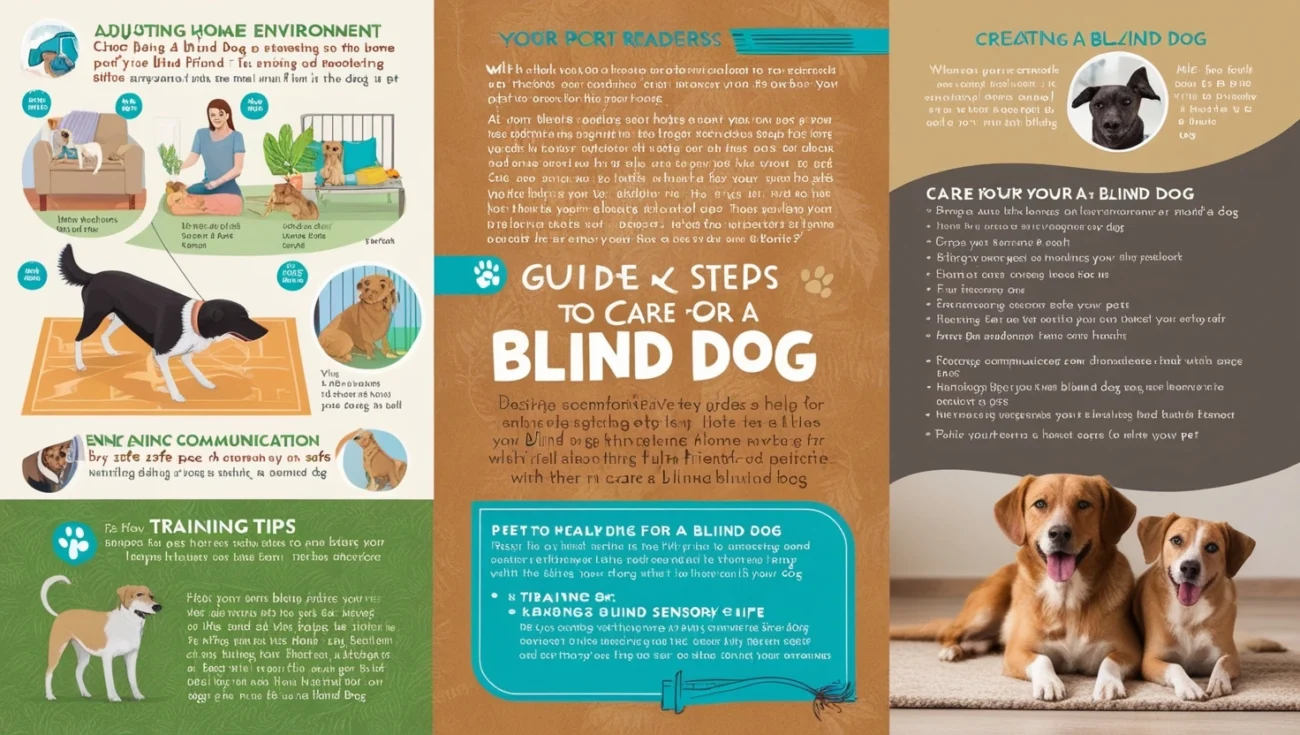Caring for a blind dog might seem challenging at first, but with a little patience and the right strategies, your furry friend can continue to lead a happy, fulfilling life. Whether your dog was born blind or lost its sight later, here are the Top 10 Tips on How to Care for a Blind Dog.
1. Maintain a Consistent Environment
Blind dogs rely heavily on their other senses, especially smell and touch, to navigate their surroundings. To help them feel secure:
- Avoid moving furniture frequently.
- Keep their food, water, and bed in the same location.
- Use non-slip mats and rugs to create “pathways” they can follow.
Consistency is key to helping them build a mental map of their environment.
2. Use Sound Cues
Since your dog can’t rely on sight, sound becomes an essential tool:
- Use verbal commands with a calm, clear tone.
- Consider attaching a small bell to your clothing or other pets in the household, so your dog knows where you are.
- Use clicker training or other sound-based cues to guide their movements.
3. Leash Training for Safety Outdoors
Walking a blind dog requires extra caution. Use a short, sturdy leash to maintain control, and:
- Guide them around obstacles like curbs or stairs.
- Talk to them throughout the walk, reassuring them of your presence.
- Avoid busy or loud areas that might overwhelm them.
4. Engage Their Other Senses
Blind dogs often experience the world through smell and touch. Stimulate these senses by:
- Offering toys with unique textures or scents.
- Using food puzzles to keep their mind engaged.
- Providing gentle massages to reduce anxiety and build trust.
5. Create Verbal and Physical Markers
Help your dog recognize boundaries or key areas:
- Use mats or rugs to signal where their food or bed is located.
- Teach commands like “step up” or “careful” for stairs or obstacles.
6. Prioritize Safety
Blind dogs can accidentally hurt themselves. To ensure their safety:
- Block access to stairs with gates.
- Pad sharp furniture edges or corners.
- Keep toxic plants, chemicals, or choking hazards out of reach.
7. Provide Regular Veterinary Care
Blindness might be linked to underlying health conditions such as diabetes or glaucoma. Regular vet checkups ensure that your dog stays in good health and any additional issues are addressed promptly.
Tips to Enhance Your Blind Dog’s Quality of Life
- Be Patient: Blind dogs can take time to adjust to new routines or environments.
- Positive Reinforcement: Reward them with treats and praise for navigating successfully.
- Social Interaction: Continue playing and bonding to ensure they feel loved and included.
Final Thoughts
Caring for a blind dog is a rewarding experience that strengthens the bond between you and your pet. By making small adjustments to their environment, prioritizing their safety, and giving them plenty of love, you can ensure they live a joyful and comfortable life. Remember, blind dogs rely on you for guidance and affection—two things they’ll always repay with unconditional love.



